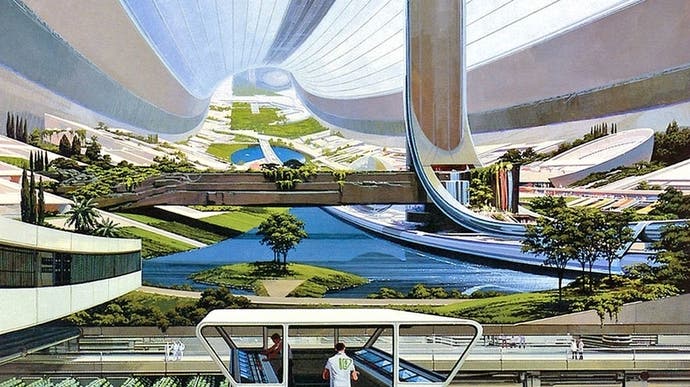Syd Mead's artistic legacy lives on through video games
From Aliens to Cyberpunk via the Mass Effect arc.
Having played a critical role in the production of 1982's Blade Runner, illustrator Syd Mead was asked what title he'd like to appear as in the film's end credits. "Visual Futurist" was his reply. Now there's a job role you'd enjoy explaining to people at parties. Mead was a modern-day farseer, using his skills as an industrial designer and concept artist to build the worlds of tomorrow. What's more, his visualisations have had an immeasurable impact on video games and the many artists working within the industry.
It's often said that games draw from an awfully narrow set of cultural and artistic touchstones. Never mind seven basic plots, there are only really two: sad man fights robots and space marines shoot aliens. Blade Runner, Aliens, Blade Runner again. Syd Mead, who died just a few weeks ago on the cusp of the new year, aged 86, is the artist behind the dominating aesthetic of an entire industry. His energy, spirit, DNA, spread out across games like ashes thrown to the wind.

In the 80s, Mead helped develop his fair share of theme parks and laser tag arenas, even a few casinos (pleasure hubs with as many flashing lights as any cyberpunk alley). It was always going to be natural for Mead to make the jump to games. He worked on a fair few: Cyber Speedway for the Sega Saturn was one of his earliest, making use of his famed vehicle-design skills. But he also returned to work on the lightcycles in Tron 2.0, designed the spaceships in Wing Commander 5, and even worked with Westwood Studios' on their Blade Runner game. Much of this work was early concepting, sketching out hover cars and so on. Other times it was consultation. Most recently, Mead consulted on Aliens: Colonial Marines, fleshing out what he'd started all those years ago on the James Cameron film. In some respects, we're unfortunate. An artist so talented, and willing to work in our space, who never found his 'big' game. But I don't think it matters - there are so many indebted to him, shot through with his style, infected with his imagery.
Where to start with such an immense artistic legacy? Syd Mead always started with a car. His background was in industrial design, working for Ford Motor Company and later, US Steel. Mead was hired to make automobiles look desirable, to make the corporate cool. I can't help but think of CD Project Red's upcoming 2077, and how critical the car has been to its marketing. A lounging sportscar is the 20th Century's addition to the romanticist image of the figure, back to the viewer, looking out to a wide horizon. There's something fetishistic about 2077's automobile - 80s stylishness crashing against Mead's careful retrofitting - but it also seems necessary. The Night City needs a car the same way NeoTokyo needs its motorcycle.
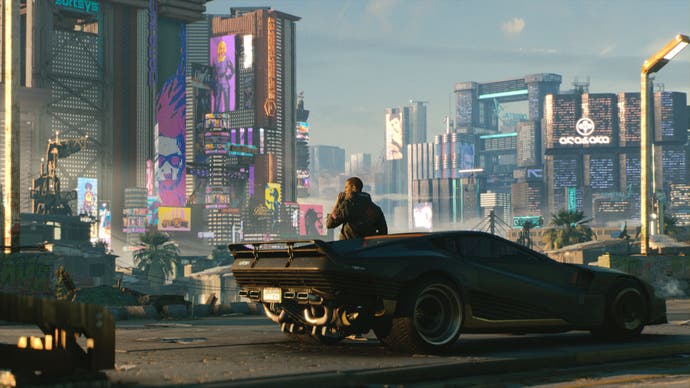
Mead's pin-up cars were sleek and cutting-edge, but aspirations always extended further. It was an era of techno-optimism, and Mead was just as apt at envisioning scenery as he was coupes. If the cars could hover and fly, then so too must the distant cities and spires silhouetted against the alien world's setting suns. In fact, what was originally created to support the vehicles Mead designed, often overshadowed them.

Mead was originally hired to design just the vehicles for Blade Runner, but the automobile - his speciality - was an opportunity. It was how he opened portals to other times and places. While sketching out the film's iconic "spinners", Mead began to think bigger. A car was only as exciting as the surroundings mirrored in its polished surface. Only as cool as the landscape it cruised by. So important was "the flowing cascade of reflection". "The chrome ignites with a hundred blue-white suns," Mead once said. A rough sketch wasn't enough. He needed a dark, rain-slicked street for the headlamps to illuminate. In the Polish cyberpunk game Observer, you begin your investigation in the cockpit of one such police car, the windscreen protection from the polluted downpour, the dashboard lit up like Times Square. It's a prototypical Mead image.
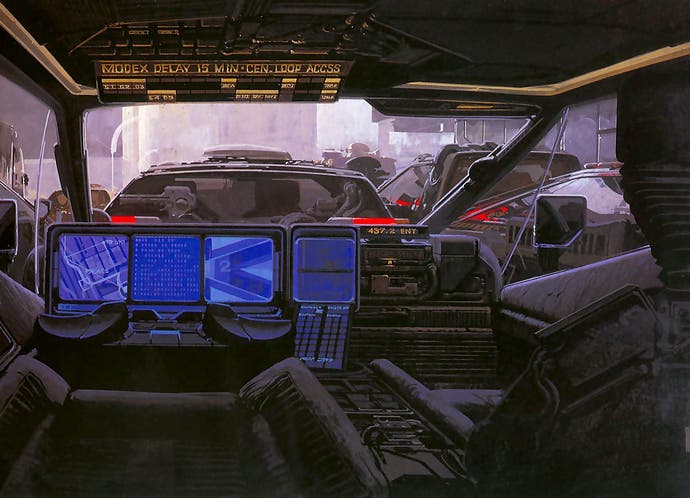
With Blade Runner, Syd Mead transformed cold technical drawings into snapshots of urban night-life. A cold cityscape suddenly came to life, evoking the lonely realism of an Edward Hopper painting. The flashes of future Los Angeles we were gifted are striking: neo-noir with a Gothic tinge, abandoned apartments, streets draped with cables and wiring. Balanced against this was the bustle of the market stalls and shopfronts with their neon signs and cryptic symbols beaming out into the darkness, although only ever to make the shadows more dramatic. It's quite a thing to invent the entire aesthetic of cyberpunk almost by accident. An entire genre brought to life because the taxi cabs looked a bit dull just sketched there on their own.
Film director Dennis Villeneuve once described Mead's work as being "nostalgic", which is a strange term to describe something futuristic. But the future is never just that, is it? As an actual point in time it's fundamentally inscrutable. Instead, Mead traded in visions, and if, when looking at his depictions, we have "the strange sensation" of having been there, of having "strolled through" before, it's because in a way we have. I'm reminded of a quote attributed to the grandfather of cyberpunk, William Gibson (who worked with Mead on the Johnny Mnemonic film): "the future is already here - it's just not evenly distributed." We live among high-tech pockets, elements advanced ahead of their time, glimpses of things to come. This is the raw material with which futurists extrapolate.
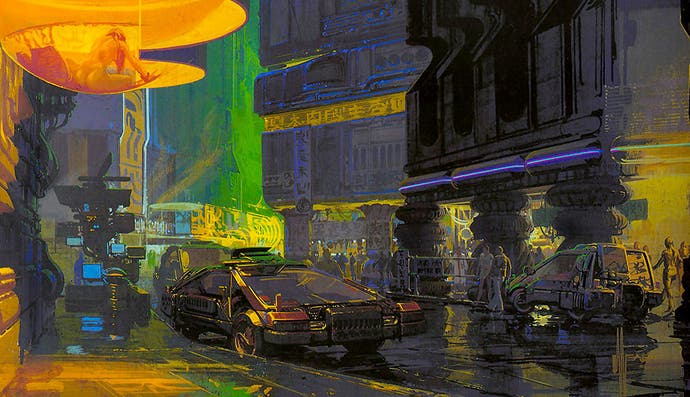
Syd Mead's material may have been the two years he spent in Okinawa, Japan. Or his visits to Hong Kong. Cybeprunk as a genre has long had an odd fascination with parts of Asia. Dawning globalisation combining with a kind of "Yellow Peril" and anxieties around "Tiger Economies". The original Deus Ex game was partially set in Hong Kong, and the later Human Revolution in Hengsha. But even with this orientalism supposedly stripped, like in Mankind Divided's Prague, the original influence is pervasive. Its Golem City is familiar. A salvaged sprawl of slum-living, criss-crossed with wires and ventilation shafts and crowded with lights, busy flea markets, exotic signage, more lights.
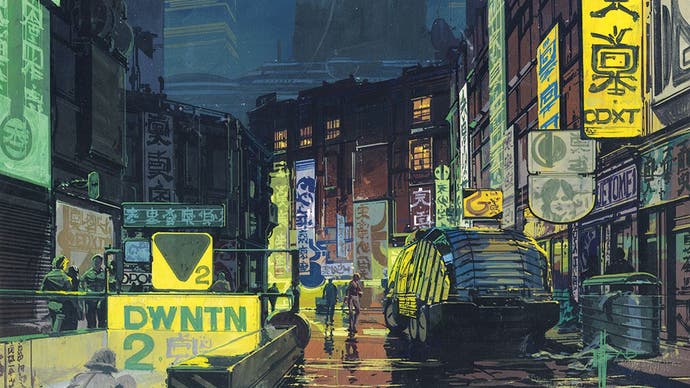
While much of Mead's imagery is ubiquitous in games - cyberpunk sprawl, alien-infested spaceship, even ringworlds - his work has also influenced a whole generation of game artists in a more indirect way. He's inspired numerous video game world-builders, including Viktor Antonov, the architect of both Half-Life 2's City 17 and the Dishonored series' Dunwall. Antonov shares a background in industrial design, and much of his work also begins with vehicles - the Combine APC or the Dunwall Rail Car a jumping off point to explore larger fictional metropolises. With constant, solid, technical reference, naturally. Sci-fi is always speculative, but like Mead, Antonov was specifically hired to make made-up places seem plausible and feel authentic.
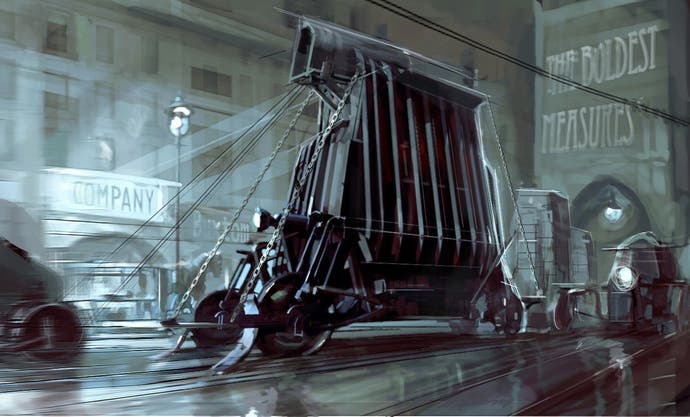
Much of Mead's work was dark and industrial. Think of Aliens' USS Sulaco, which Mead meticulously designed, inside and out. "Bristling with antennae," as director James Cameron requested, the military vessel was a far cry from other sci-fi spaceships. Instead of improbably elegant or needlessly greebled like Star Trek and Star Wars, the Sulaco was highly engineered and purposeful. Inside, the tangle of pipes and mesh of grills and hatches - now a staple of the sci-fi interior - gave the impression of spatial depth. What skulked behind those walls? In games we see in that same dead space, lurking Necromorphs, or a sleuth of demons poised to jump out from behind hidden panels.
Mead is famous for his gritty dystopias, but Dennis Villeneuve suspects his universes are actually "fuelled by the strength of the optimism of the 50s", when, at least in the West, war was behind us and capitalism entered into a new golden age off the back of technological and scientific innovations. Jet engines, computers, and the Apollo space programme. It was out of this background that Mead's visions sprung - not so much the future as a collective dream, now evidently unrealised. A lost future. No wonder looking at some of his artworks feels like going back home.

Mead knew how to paint utopias too. His style - colourful, vivid, light, clean, precise - channelled the speed and positivity of the supersonic age. The game series that probably most explicitly draws from him is Mass Effect. BioWare's art director Derek Watts has talked about how, in their search for a visual identity, the team looked at Mead's early, utopian, work, with its distinct geometric curves and exciting optimism. Like the aircrafts that whoosh across Mead's blue skies, jet-trails in their wake, Mass Effect is filled with gentle curves and projections that sell the speed, propulsion and positivity of its world.
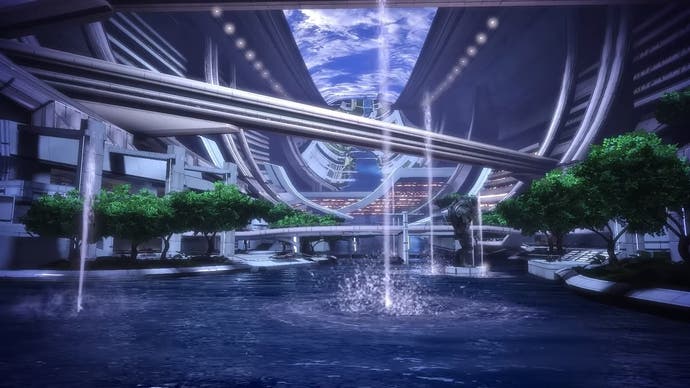
The Mako rover, the costumes and visors, the hazy clubs with their dancing holograms, the Citadel and its ring-like structure that recall those early US Steel illustrations. That sense of wonder as you land on a planet - light-years from any earthly dystopia. Instead, we get optimism radiating from distant skyscrapers set against pastel skies.
"Their sensuality and beauty offer such a magnificent contrast with the brutality of our reality," Villeneuve says on Mead's early work. The director believes we're in desperate need of utopias now. It's hard to disagree with this assessment, although I think what's so special about Mead's work is the range - his ability to paint in vastly different shades. It's no wonder we see so many flashes of Mead's brilliant influence in games. Every time we land on a new planet, or stare up at a sublime skybox or a looming megastructure. When we zoom by in a rocketship, a bike, a car. It's hard to shake the visions of someone whose job is to see into the future.
